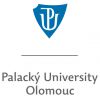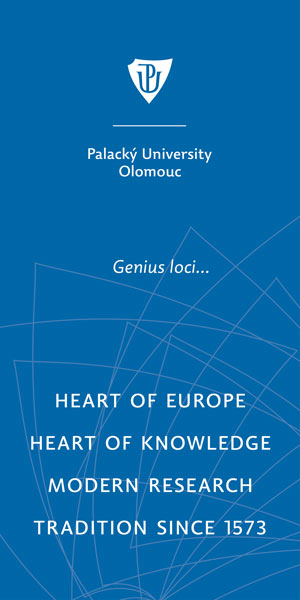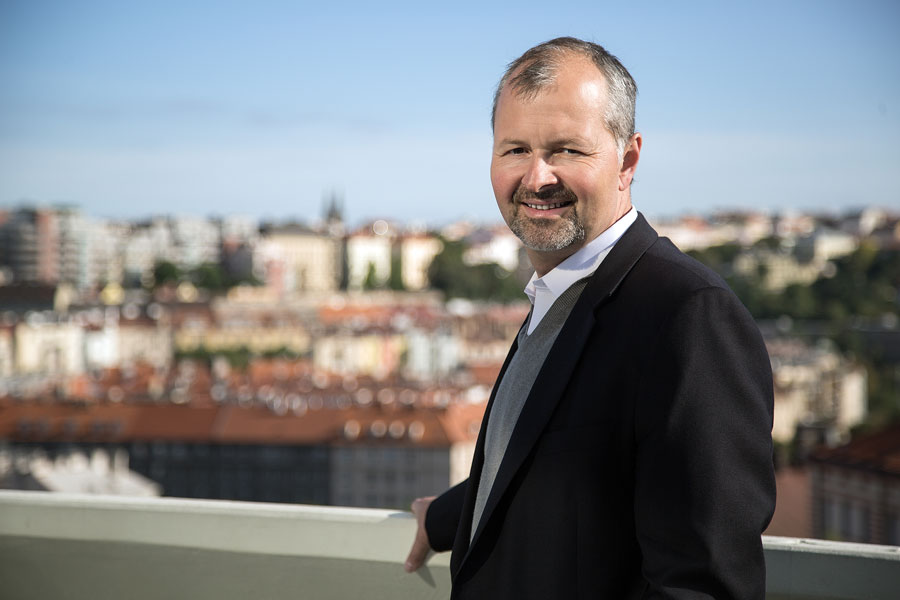
Bohdan Pomahač (b. 1971), Czech plastic surgeon, a graduate of the UP Faculty of Medicine and Dentistry, who carried out the first complete face transplantation in the USA in 2011. Since 1996 he has been employed at the Brigham and Women’s Hospital in Boston. He has been the Chief Surgeon since 2009 at the Trauma, Burn, and Surgical Critical Care ward. He has already given seven patients face transplants and three patients both upper limbs transplants. He is the recipient of the Neuron Prize for contributions to world science in the field of medicine, and he has also been awarded by the Czech Transplantation Foundation for developments in transplantation medicine. In 2015 the Czech president awarded him the country’s Medal for Service. For his significant contributions to the development of plastic surgery methods he was awarded an honorary doctorate by his alma mater – his first.
Photographs of the faces he transplanted went around the world long before his own. Now, even his face is as famous as those from his ground-breaking operations: Bohdan Pomahač, plastic surgeon.
When did you first imagine with some certainty that you could give somebody back a face?
Everything made sense and the technical part of the operation was viable according to our preparations, so I firmly believed that it was not only possible, but that it would work. On the other hand, a person is only really certain in the moment when the first patient is released from the hospital. Until then, anything can happen.
What motivates you to such demanding operations as complete face transplants? Where do you get the strength to overcome the risk of failure?
I’ve never avoided difficulty. Just the opposite – one of the reasons why I chose medicine was that it had the reputation of being the most difficult area of study at the university. And that’s the same way I operate in my chosen profession. If something is tough, it doesn’t stop me – I consider it a challenge. The possibility of failure is not something I usually accept. It’s a matter of clinical research – everyone, including the patient, knows that things might not work out. But if you have the will and a cool head, then things usually come through for the most part. Many problems can be foreseen and a person prepares for that; I’ve always got a Plan B. The most difficult part of the operations are the unknown complications – which nobody can predict, because they’ve never been seen before. Then Plan B is not enough, and a person must come up on the spot with a Plan C, D, or even E. And there is no time to take measurements, conduct diagnostics with machines, etc. So often it is about the likelihood that your thinking was correct. So far so good, and the chance it might be otherwise in the future is becoming less and less.
To what extent do the dramatic life stories of your patients weigh down on you? And how does it feel when you allow them to return to a full life?
I think a doctor has to slightly free himself of emotional feelings. Empathy is of utmost importance; but a doctor cannot involve himself in the drama which the patient has been through and will go through. Medicine in general is a field where the satisfaction from the job is perhaps greater than any other. It’s wonderful. A grateful patient is truly grateful – they are not playing games, there’s no exaggeration. And that honesty positively influences you as a doctor; that is probably the greatest thing that a person can experience at work. I have a great job.
You are still coming up with and proving new hypotheses and possibilities in transplantation. Are there any limits in your opinion which cannot be overcome?
In terms of the surgical possibilities in the area of face transplantation, the foundations have been laid. There are a number of things which could be done better in the future, but there will be no radical advancements, rather we will fine-tune the procedure. What is possibly most fascinating is the process of immunological tolerance, the way our body reacts, what is actually going on in that first year and the next years after transplantation. I and a number of my colleagues are finding something new each year, and the longer we’ve been doing it, then the more probable it is that our results will be a boon to other patients. In my mind, this is likely the most important thing we are doing. Immunology is of course at the centre of rheumatology, autoimmune disorders, transplantations, and also many tumorous diseases. A person never knows which discovery is going to make a difference in other fields.
What pushes you onward in your work and forces you not to keep doing the same thing?
Doing the same thing is boring! I certainly prefer stimulating work over routine, and I’d guess that the majority of my colleagues feel the same.
What about your professional ambitions – what would you like to achieve?
I have to admit that I do not have any more ambitions regarding what else to transplant. I enjoy reconstructing faces, I have a lot of projects which are promising and are going forward, so I am continuing in what I started, rather than coveting the next “first” or “major”.
Eva Šonková: Fleeing from the paragraphs into the woods
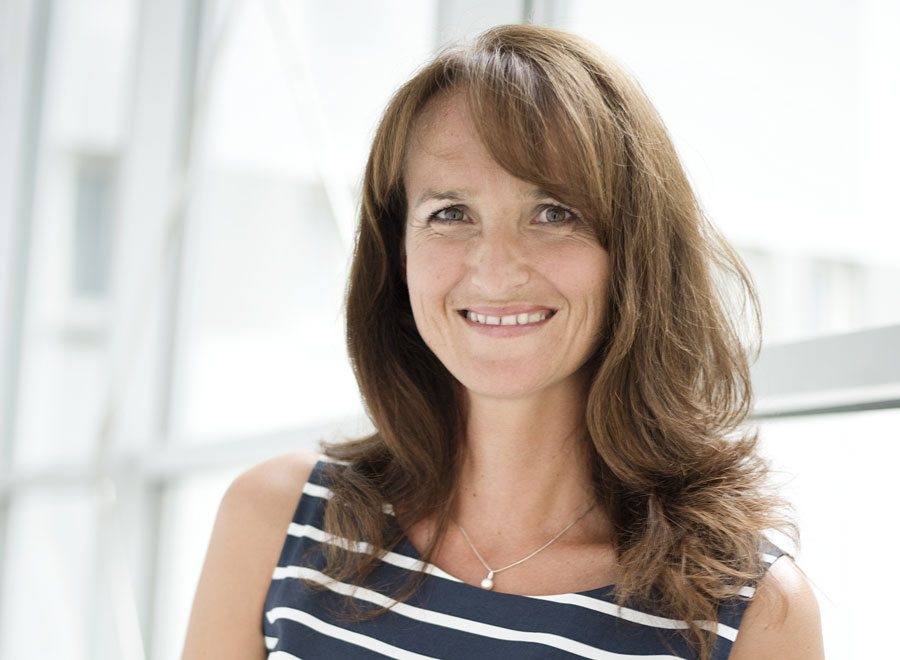
Eva Šonková (b. 1976) a native of Nový Jičín, she was named a judge in 2003. Until 2005 she worked in the District Court in Rokycany, but was assigned to serve in the Administrative Justice Section of the District Court in Pilsen. Later she became a judge in the Regional Court in Pilsen. While working at that court from October 2005 to March 2006 she was temporarily assigned to the Supreme Administrative Court. She became a permanent judge there in 2007.
The avenue of chestnut trees near the Faculty of Law and basketball. Such trifles made the decision for Eva Šonková, today a judge at the Supreme Administrative Court, to spend her student years in Olomouc.
She was interested in languages and philosophy at middle school. But something inside her told her she ought to study something more practical and complex. And so she chose Law. “At that time I spent a lot of time following basketball. I made the decision to go to the place where they play the best basketball. Then that meant Brno, but I ended up elsewhere. Happily, they also played basketball in Olomouc,” remembers Eva Šonková. She applied to Olomouc in Law at a time when that was one of the hardest fields to get into – with 25 applicants vying for each place. Eva Šonková got one of them. “I’ll never forget my first impression of Olomouc. When I went to the entrance exams, the chestnuts were in bloom everywhere. I said to myself, it’s so beautiful – I’m staying,” says the native of Nový Jičín.
Šonková, one of the youngest judges at the Supreme Administrative Court, considers her student days as an absolutely essential period in her life. “I made the most important social contacts at that time, ones which still continue – student friendships. Even my husband studied at Palacký University.” When she mentions teachers she met at the university, she does it with respect. It would be impossible for her to name everyone who had a huge impact upon her – but at least two stand out: Pavol Holländer and Josef Rakovský.
Headfirst into Administrative Law
Eva Šonková has her office hidden on the fourth floor of the grandiose historic building of the Supreme Administrative Court in the Brno town centre. Only those in the know can find her in the maze of corridors. She has no clear answer to the question why she decided to become a judge after studying Law. Apparently she couldn’t conceive of another calling connected with those paragraphs during her studies. “I would only have considered other work if I couldn’t have been a judge.”
Her path to the Supreme Administrative Court was fairly direct, but it certainly was not an easy one. She began her career as an assistant judge at the Supreme Court of the Czech Republic. After a year she came up on the waiting list at the District Court in Rokycany. The shift from a huge building full of top-flight lawyers to a “mini-court” is something for which she has absolutely no regrets. Just the opposite. “There I had the opportunity to work next to Zdislava Pražáková, Chief Justice of the Supreme Court of the Czech Republic during the Czechoslovak Federation. She was the one who showed me how to be a judge. She played a huge part in the way I approach my work and how I see the law.” She was named a judge by President Václav Klaus in February 2003. She was twenty-six. Almost immediately afterwards she was headed for the Administrative Justice Section of the Regional Court in Pilsen. “You don’t have much of a choice in the judicial system as to what you want to do. I was offered a job in the Criminal Court, but I didn’t want that. There was no place for me in Civil Court, so I went headfirst into Administrative Law. And I’m glad I did.”
Work in Brno, family in Pilsen
According to Eva Šonková, Administrative Law is a slightly neglected field. Especially since it is a fairly recent one. The contemporary shape of Administrative Law is only thirteen years old. “I got in at its beginnings,” she adds, with a smile. After finishing an internship at the Supreme Administrative Court she became a permanent judge in 2007. The Senate, of which she is a member, decides on the average more than four hundred disputes annually between individuals and the state. And what part of her job gives her the greatest joy? “Probably when our decisions are put into practise in the way we judges wanted them to be. When it influences another approach of administrative offices towards individuals – perhaps in that bureaucrats have stopped insisting on nonsensical, long-established formalities, and are trying to resolve the problems they have on their desks, not just ‘manage’ them. When our work rouses lawmakers into some activity and helps remove obvious injustices,” she says.
If she could, she’d probably run home from work. Literally. Running for her is the ideal activity when she has free time. Only… the distance from the court to her home is three hundred kilometres. Her home is in Pilsen. “I have a strange work rhythm. It can be arranged; it needs however the support of the family, good organisation, and resolve in order for it to work.” Part of the week she has to leave her family and dedicate herself intensively to work.
Radek Zbořil: I’m living my dream
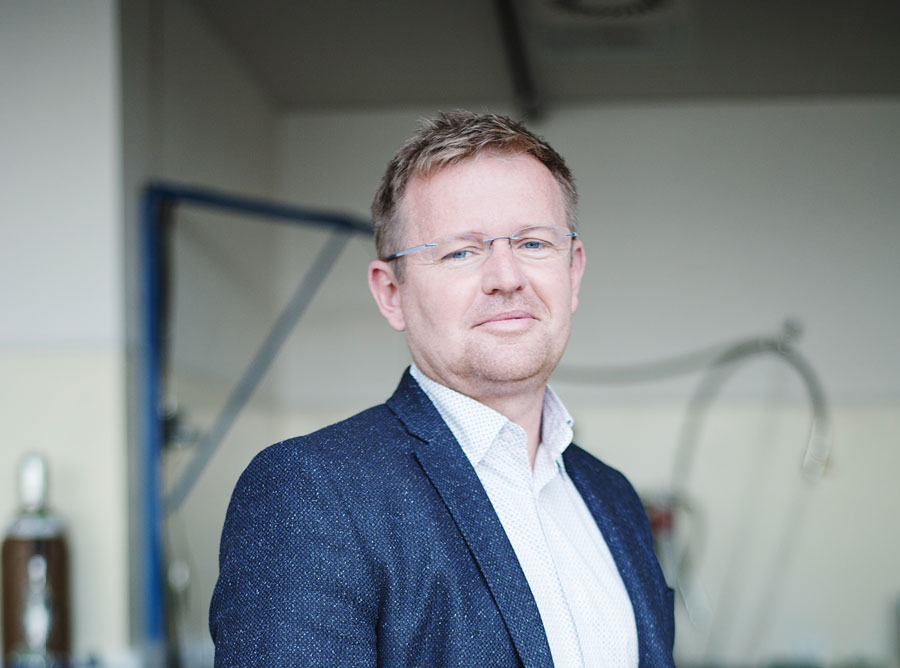
Radek Zbořil (b. 1973), Professor in Physical Chemistry and RCPTM General Director. Co-author of more than 350 publications, with almost 10 000 citations. Recipient of the Czech Ministry of Education, Youth and Sports Award. A member of the Learned Society of the Czech Republic, the Board of the ALFA Programme at the Technology Agency of the Czech Republic, National Innovation Platforms, and the Scientific Council at the NEURON Fund for Support of Science, among others. He is the author of a number of patents and technologies that have been successfully commercialised.
A renowned scientist in the fields of materials chemistry and nanotechnologies, an excellent teacher, and a successful manager. All these qualities come together in the person of the Director of the Regional Centre of Advanced Technologies and Materials (RCPTM) at Palacký University – Radek Zbořil. A true Olomoucian, loyal to his alma mater, he continues to bring scientists from all over the world to his native city. The scientific institute run by him stands shoulder-to-shoulder with its global rivals.
What programme were you in, and how do you look back upon your studies?
I graduated from the Faculty of Science in Mathematics and Chemistry. I was not the ideal student, I studied for exams at the last minute, and never missed a single student party. However I learned to accomplish things and work under stress. And this is a skill I’ve been making use of ever since. Mathematics helped develop logical thinking, while Chemistry satisfied my need for experimental discoveries into how things work.
What is your expertise?
During my doctoral studies there was a great boom in the study of nanomaterials, due to advancements in microscopic techniques, which allowed imaging of these ultra-tiny particles of matter. So I too became consumed by the desire to recognise the invisible world, where entirely different scientific rules apply. After internships in the United States, Greece, and Japan, I knew that this would be the discipline for me.
What nanomaterials do you develop and what are their applications?
The answer would fill a book. The most important projects I personally participated in include the development of the thinnest insulator in the world, co-discovered with a group of Nobel Prize laureates in Manchester. Recently, we published an article on our discovery of the strongest known organic magnetic composite. With my colleagues from the UP Faculty of Medicine, we were the first to describe in detail the antimicrobial properties of silver nanoparticles, today commonly used in medical and antiseptic applications. We hold a European patent for the production technology of iron nanoparticles, which are used in the treatment of groundwater contaminated by organic compounds or heavy metals in many locations here as well as in the rest of Europe.
You run one of the most successful scientific centres in the country. Was it a big challenge to establish an international institute under Czech conditions?
The establishment of the RCPTM was financed from EU funds in 2010. It was a lengthy process with a demanding international evaluation; but in retrospect, I think it was really worth it. Today the Centre employs 140 scientists from 15 countries. Our specialty is nanomaterials, chemical and optical research. We have managed to attract scientists from prestigious institutes in France, Italy, and the USA. After my doctoral studies, I considered working abroad. The opposite option – to run an international team in Olomouc, joined by the best scientists in the world – sounded like a fantastic dream, but I hoped I could turn it into reality. We have accomplished a number of things. We have outperformed all fifty new Czech institutes that were created within the same European programme in citations. We were the first team at UP that received the prestigious European Research Council grant. Our patented technologies are used at the world’s major observatories for the study of cosmic rays and in the largest European accelerator, CERN in Geneva. Long-term contracts with transnational companies such as Procter&Gamble help support our research.
What are the roles of your alma mater and Olomouc in all of this?
Thanks to UP, we managed to go through the preparatory phase of the project and all public contracts without complications. This is also why today we have the most efficient electron microscope in the country. The university has been an inexhaustible source of students in Master’s programmes as well as postgraduates who engage in all our activities. It is not a coincidence that the average age of RCPTM employees is younger than 35 years. Last but not least, Olomouc is a great place for living – a quiet, historical, university town, appreciated by everyone from Asia to South America. Not so long ago a top scientist from Greece moved permanently to Olomouc with all his family, including the grandmother. It may sound trivial, but he is a person who would easily get a job in Germany or England. I think such stories say it all about RCPTM, Palacký University, and Olomouc.
